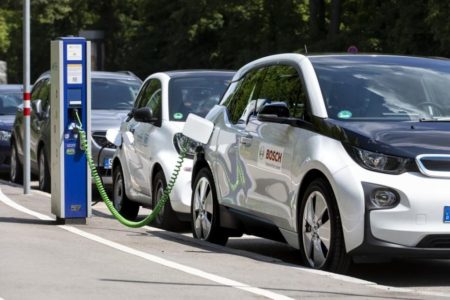September 9, 2019 – A million units sold sounds like a lot, but in the automobile business that is rather a conservative number. It does, however, mark a milestone and what the industry is now describing as a “tipping point” in Europe at least, making it the second-largest market for electric vehicles (EV) on the planet, three times bigger than the United States, but half the number sold in China.
The European market is still in the EV early stage. In 2018 Europeans could choose from 60 EV, plug-in hybrids, and fuel-cell models. In 2020 that number is expected to grow to 176. By 2021 it will be 214, and by 2025, 333. Around 60% of the total European EV production in 2025 will be battery-based. And this growth aligns with Europe’s carbon emission reduction goals over the same period.
Why is this happening in Europe at this time?
Transportation in Europe is the single largest contributor of airborne carbon on the continent amounting to 27% of total emissions. Of the 27%, 44% comes from automobiles with the number keeping on rising.
At the 2015 Paris Climate Agreement, the EU committed itself to net-zero emissions by 2050 and new-car sales to be net-zero by the mid-2030s. European manufacturers are required to reduce carbon emissions on new vehicle sales by 15% in 2025, and 37.5% in 2030.
EV sales in 2018 were relatively small in numbers accounting for 2.5% of the total European market. The top country, Norway (technically not an EU member) was responsible for 49% of EV sales. A distant second was Sweden at 8%, followed by the Netherlands, 6.7%, Finland, 4.7%, and Portugal, 3.4%.
Production, however, is ramping up with 2019 seeing three-quarters of a million built and sold. By 2025 the number is expected to grow to 4 million with a big decline in diesel-powered cars. The combined sales of diesel and gasoline-powered vehicles will decline by 2.7 million by that same year. Among domestic EU makers of EV cars will be Volvo, Volkswagen, BMW, and Daimler. Japanese, Korean, and Chinese EV carmakers, and some joint-ventures with European producers will make up the balance.
The EV cars built by European companies will largely stay in Europe. Why is that?
- Because EU carmakers and foreign companies producing them will need their entire production in the local market to meet carbon emission reduction benchmarks.
- Because exports will be inhibited by the lack of charging infrastructure in many non-EU countries.
What about battery capacity?
A potential inhibitor to achieving these forecasted volumes will be the production of lithium-ion battery packs. A recently formed European Battery Alliance has set a benchmark for manufacturing capacity with a goal of 131 Gigawatt-hours (GWh) by 2023, and 274 GWh by 2028. Comparisons with global capacity forecasts of 964.8 GWh in 2023 and 1,594 GWh by 2028 show that the EU will increase its world market share from 6.6% in 2019 to 1.7.2% by 2028. This will leave a capacity storage problem which will require European carmakers to rely on battery packs built in China. But by 2028 Europe will more than meet its battery pack capacity requirements for the EV cars it will produce. If you want to learn more please visit a detailed breakdown of Europe’s EV vehicle forecasts.
How does Europe compare with the rest of the planet?
American demand for EVs including hybrids is forecasted to rise to 1.28 million by 2026, a much smaller sales volume than Europe. The North American market will continue to be dominated by Tesla, the company that created the modern EV phenomenon. General Motors and Ford Motor Company will be distant competitors. But Tesla’s numbers are small. It sold 240,000 EVs in the global market in 2018 and expects to close this year with unit sales of between 360,000 and 400,000. On the battery pack side, capacity largely Tesla-built is expected to reach 130 GWh by 2023.
What’s holding America back and the spillover to Canada and Mexico, tied together by the North American automotive marketplace through a free trade agreement? It is the anti-climate change policies of the U.S. federal government that continues to support the status quo in the automotive industry, the internal combustion engine. In the last week the Democratic Party held a town hall event on climate change, and should one of the people running for president get to the White House in 2020, it is likely that North America will suddenly awaken to the EV market potential as the country tackles carbon emission reductions as a climate change mitigation policy.
The case of China, however, is quite different. The Chinese government is hell-bent on not putting many more diesel and gasoline-powered cars on its roads because of its smog-laden cities. In 2018, China recorded 1.1 million in EV and hybrid sales. Its 2019 forecast will surpass 2 million by year’s end. And by 2025 forecasters are estimating a market growth to 12.7 million EVs annually.
China’s battery pack capacity which reached 286 GWh last year is forecast to grow to just under 800 GWh by 2025, and 1,549 GWh by 2028. That will make China the largest manufacturer of battery packs on the planet and will allow them to meet domestic and foreign demand.















